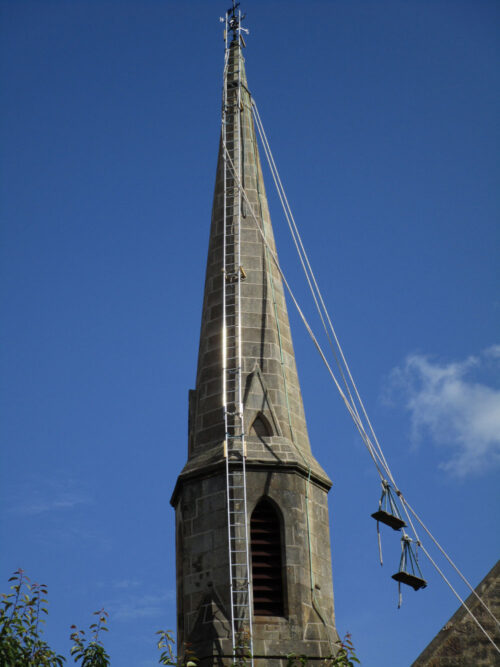Click on any picture to enlarge. Click on the picture again to minimise.
This 2015 job involved stabilisation of the head of the spire followed by full rake out and repointing.
We also carried out more minor tasks like painting the finial and fitting mesh to louvre windows to prevent birds getting in and making a mess of the inside.
We fitted four large and strong copper cramps to stabilise the head of the spire. This was the clients favoured approach as the Church could not afford a full rebuild. This repair will keep the spire stable for a great many years to come (it will see all of us out).
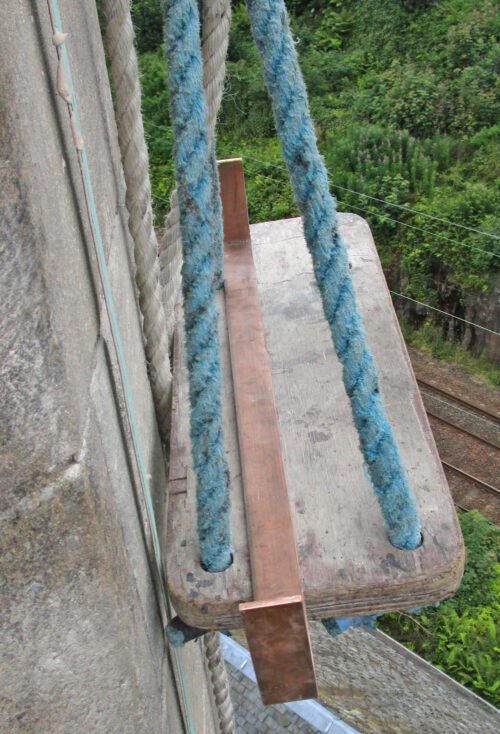
This slot was cut to allow the cramps to be recessed into the masonry. This makes them a little stronger (by going a little deeper into the masonry) but the main purpose of the slot is for appearance sake (cramps look better when they are back flush with the face of the masonry). You can also see the holes that we’ve created to accept the cramp “legs”.

This picture shows the cramp fully inserted. They are all secured with Hilti resin. Before inserting the cramps the holes are completely filled with the material. As you insert the cramp most of it is pushed back out but it means the cramp is very securely fitted into solid resin (no air pockets – it’s all direct contact from stone to resin to copper).
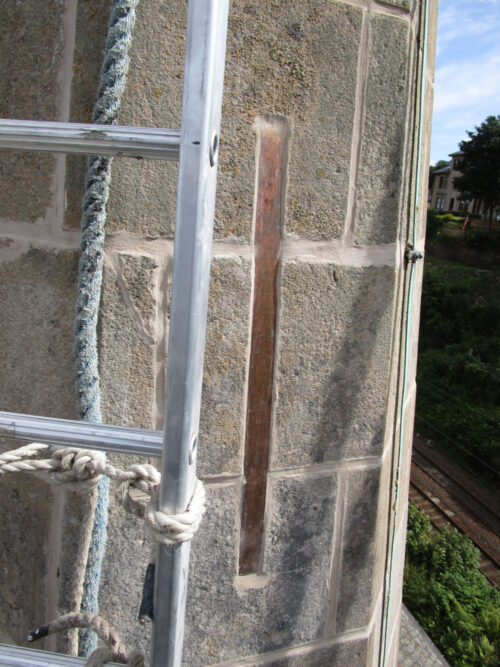
Raking out the old cement mortar in preparation for a full repointing exercise with hydraulic lime mortar (much better for the structure – won’t damage it as cement can).
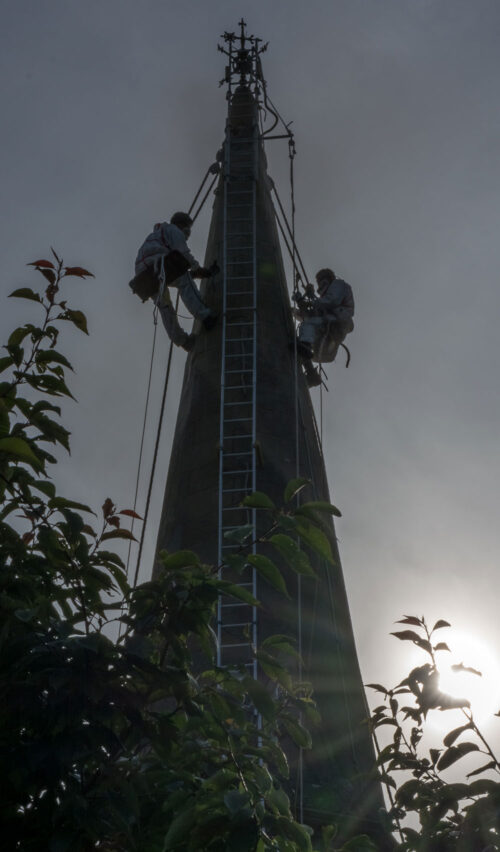
This is the pointing work in progress. Look at the beds and joints below the new work and you’ll see that they have been raked out (old cement removed) ready to take the new hydraulic lime.

Looking up the spire at the new pointing.
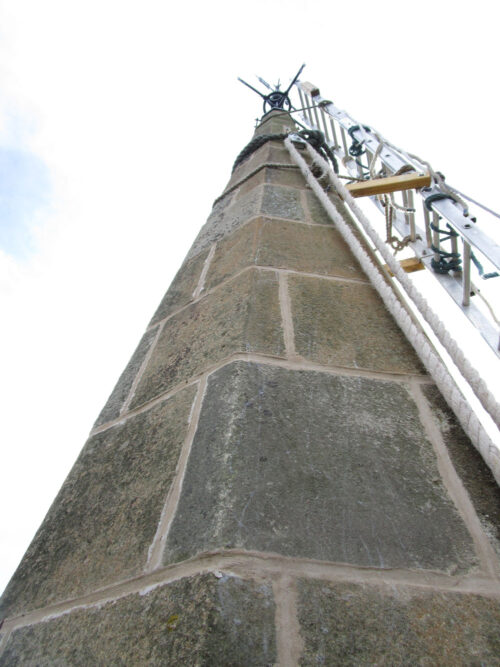
Another view of the new work.
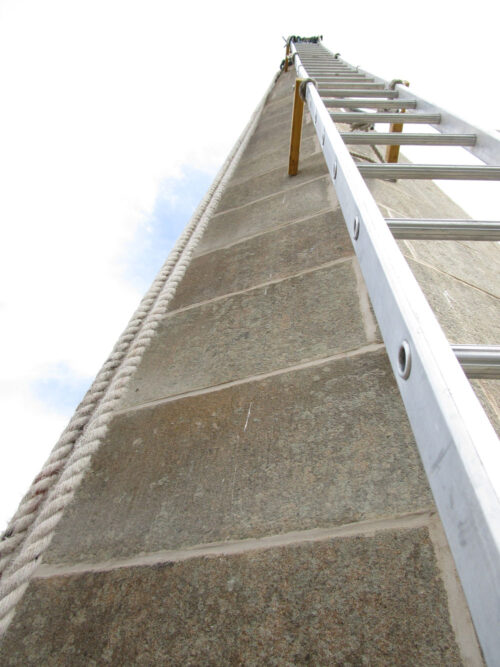
And another.
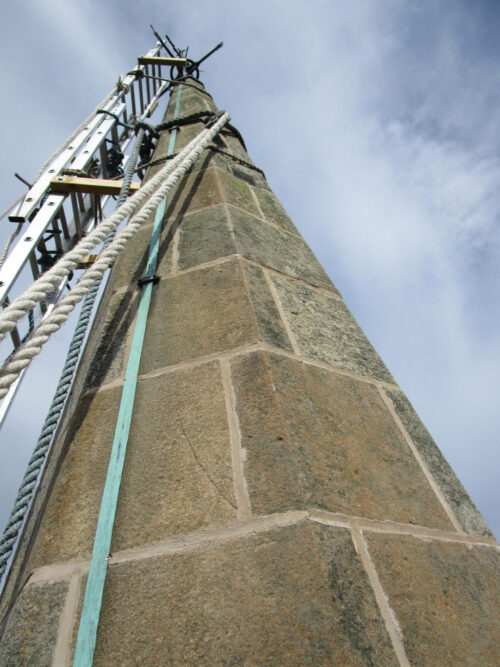
Looking downwards this time.
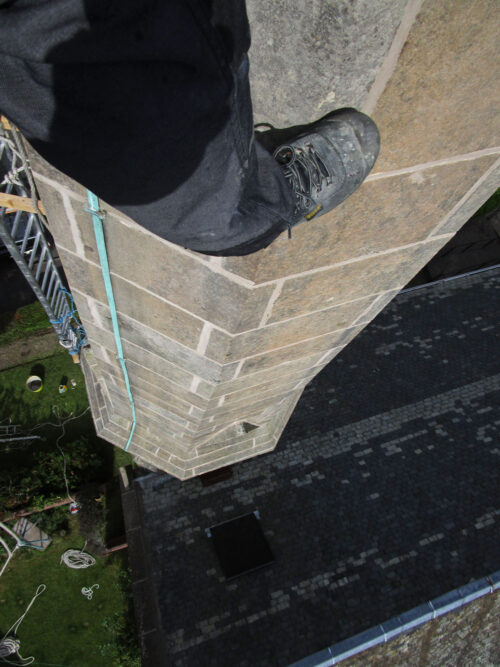
Here you can see one of the newly meshed louvre windows.
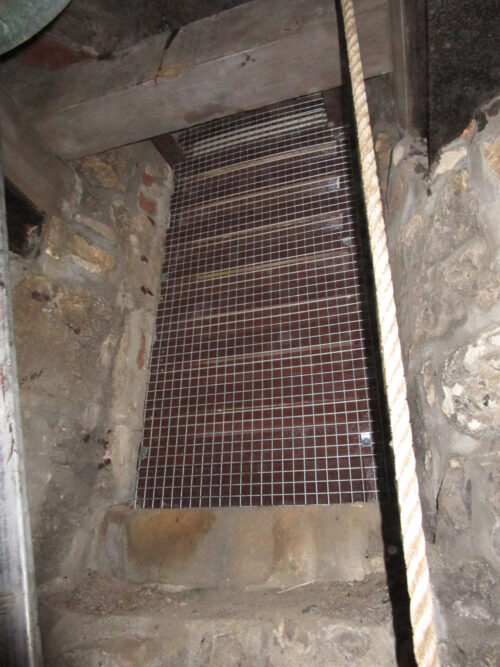
This picture was taken near the end of the contract. The spire is fully raked out and repointed, the steeple has some “patch” pointing done, the finial (weathervane) has been painted, the louvres have all been painted with 2 thick coats of quality timber preserving paint, and the rear sides of the louvres are meshed to prevent birds getting in.
It’s a good job. We’ve stabilised the head of the spire for many years to come (and it wasn’t all that safe before!), and extended the life of the finial, masonry, and louvres by doing good quality pointing and painting work.
